LEONILSON EN EL MASP: ENTRE LA VULNERABILIDAD Y EL PODER
El Museo de Arte de São Paulo (MASP) presenta la exposición Leonilson: Ahora y Oportunidades, dedicada al artista, que fue figura clave en la escena brasileña de finales del siglo XX. La muestra abarca sus últimos años creativos, donde explora temas de amor, pérdida y la fragilidad humana con una voz íntima y única.
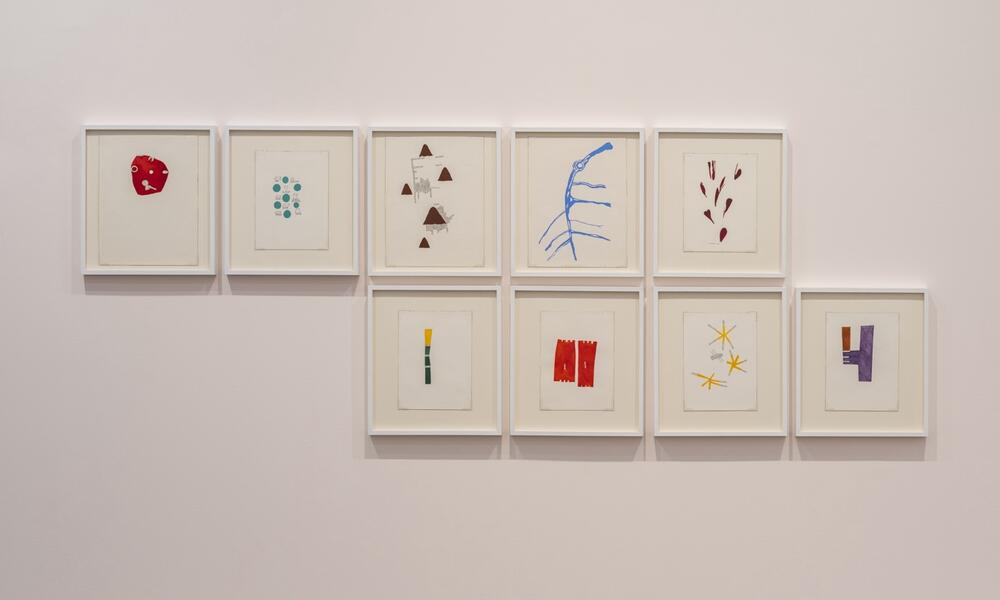
Leonilson (1957-1993) es un artista central y marginal en la historia del arte brasileño. Central porque es autor de una obra absolutamente imperdible de finales del siglo XX, reconocida en numerosas exposiciones, libros e incluso en tatuajes. Pero también es marginal porque, con una obra tan única, no encaja fácilmente en los movimientos y generaciones de la historia del arte brasileño. Sobre todo, Leonilson es marginal porque, a finales de los años 1980 en Brasil, es un hombre gay y, desde mediados de 1991, vive con VIH; muere dos años después, a la edad de 36 años, como resultado del SIDA.
Trabajando en dibujo, pintura, objetos, bordados, telas e instalaciones, Leonilson expresa intensamente sus pasiones y emociones en sus obras, cuyos temas son el amor, el abandono, la pérdida, la soledad y la enfermedad. Pero Leonilson también expresa sus sentimientos en relación con la política, como se puede comprobar en la obra que da título a la exposición, Ágora y como oportunidades, en otras obras de la serie Minoritarias y en varias ilustraciones realizadas para la columna de Barbara Gancia, entre 1991 y 1993.
Esta exposición se centra en el llamado Leonilson tardío, el período de madurez del artista en el que refinó su lenguaje y su poética, utilizando cada vez menos elementos en sus composiciones –a menudo con rasgos religiosos– y alcanzando una cima verdaderamente sublime en 'Instalación sobre dos figuras' (1993). A pesar del carácter a modo de diario de su obra, es importante entender la obra del artista no desde un interés biográfico –ya que muchas veces mezcla verdad y ficción, biografía y fábula–, sino a través de su monumental construcción poética, representada en imágenes, materiales y textos.
La exposición se divide en cinco salas, cada una dedicada a un año de producción de Leonilson entre 1989 y 1993, en la galería del primer piso del museo y en una sección adicional en el entresuelo del primer sótano, con ilustraciones de Barbara Gancia. A más de tres décadas de su muerte, el artista continúa ofreciendo nuevas oportunidades de lectura, inspiración y significado. La imagen que queda de Leonilson, a través de obras, exposiciones, libros, películas, teatro y tatuajes, es la de un antihéroe resonante, múltiple y contradictorio.
May interest you
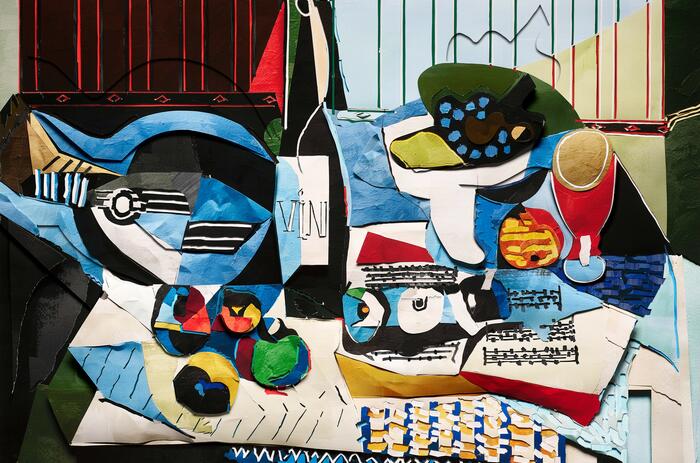
Madrid's Elba Benitez gallery has entrusted Vik Muniz (Sao Paulo, Brazil, 1961) with its first exhibition of the new season. Entitled Photocubism, the proposal is based on art historiography itself, recovering the cubist aesthetics as a substratum of the technical intervention he makes on iconic works of this movement. The Brazilian artist thus opts for this language to obtain new images that raise questions about perception and result.

Madrid's Elba Benitez gallery has entrusted Vik Muniz (Sao Paulo, Brazil, 1961) with its first exhibition of the new season. Entitled Photocubism, the proposal is based on art historiography itself, recovering the cubist aesthetics as a substratum of the technical intervention he makes on iconic works of this movement. The Brazilian artist thus opts for this language to obtain new images that raise questions about perception and result.
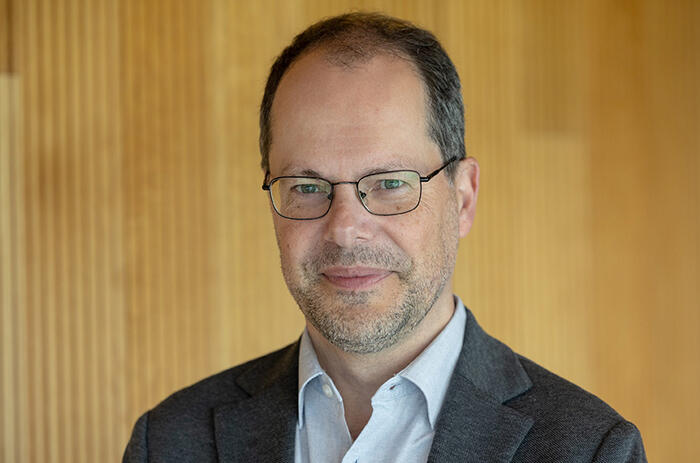
After six years of his collaboration as a teacher in the Master's Degree in Curatorial Studies offered by the Museo Universidad de Navarra (MUN), Gabriel Pérez-Barreriro has been appointed as the institution's new artistic director. With extensive experience in university museums and other centers in Europe, the United States and Latin America, he is now the new head of the MUN's artistic strategy together with Teresa Lasheras, artistic director of performing arts and music.
GABRIEL PÉREZ-BARREIRO: THE MUN'S NEW ARTISTIC DIRECTOR
After six years of his collaboration as a teacher in the Master's Degree in Curatorial Studies offered by the Museo Universidad de Navarra (MUN), Gabriel Pérez-Barreriro has been appointed as the institution's new artistic director. With extensive experience in university museums and other centers in Europe, the United States and Latin America, he is now the new head of the MUN's artistic strategy together with Teresa Lasheras, artistic director of performing arts and music.
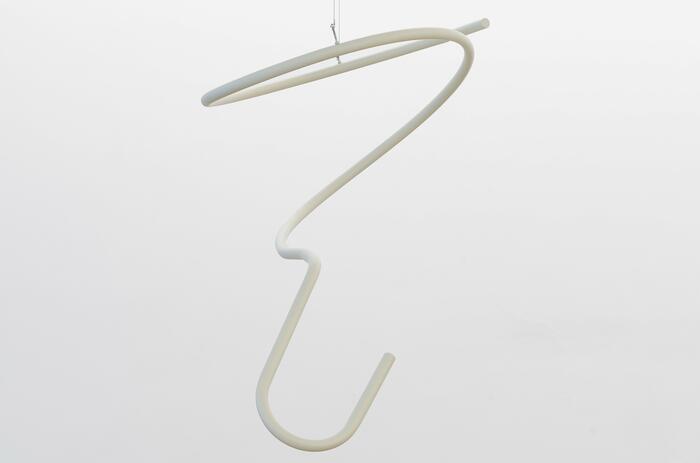
The Appearance: Art of the Asian Diaspora in Latin America & the Caribbean is the first exhibition in New York City at Americas Society to center the artistic production of the Asian diaspora in the region from the 1940s to the present. Focusing on postwar and contemporary art, the exhibition showcases the work of thirty artists from fifteen countries working in a range of artistic mediums including painting, sculpture, performance, photography, and video, to shed light into strategies and themes that resonate across a wide array of Asian diasporic practice throughout Latin America and the Caribbean.
ART OF THE ASIAN DIASPORA IN LATIN AMERICA & THE CARIBBEAN
The Appearance: Art of the Asian Diaspora in Latin America & the Caribbean is the first exhibition in New York City at Americas Society to center the artistic production of the Asian diaspora in the region from the 1940s to the present. Focusing on postwar and contemporary art, the exhibition showcases the work of thirty artists from fifteen countries working in a range of artistic mediums including painting, sculpture, performance, photography, and video, to shed light into strategies and themes that resonate across a wide array of Asian diasporic practice throughout Latin America and the Caribbean.
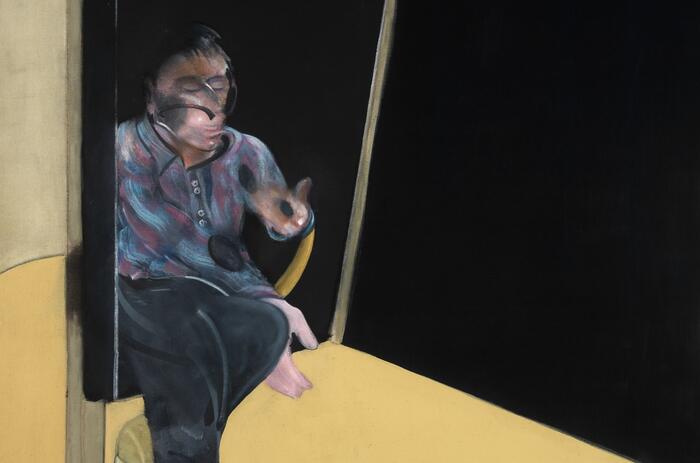
A man is waiting. In elegant clothes, the figure is placed in the center of what looks like a hotel bar. He plays the lead role on a sort of stage, an interior that is something of a cage, something of a scenic locus, as if a possible flirtation or a desired encounter would provide some catalysis of emergence, a quick enjoyment, an intense release, however short and finite, perhaps dismantling a routine of limits. Man in Blue (1954) works as a synthesis of the not so extensive but very significant gathering of the celebrated Francis Bacon (1909-1992) in A Beleza da Carne (The Beauty of Meat), at Masp (São Paulo Museum of Art). The exhibition is curated by Adriano Pedrosa, artistic director of the institution and curator of the current edition of the Venice Biennale, the 60th, on show until November in the Italian city, and co-curated by Laura Cosendey.
BODY INSIDE OUT - FRANCIS BACON, THE BEAUTY OF MEAT
A man is waiting. In elegant clothes, the figure is placed in the center of what looks like a hotel bar. He plays the lead role on a sort of stage, an interior that is something of a cage, something of a scenic locus, as if a possible flirtation or a desired encounter would provide some catalysis of emergence, a quick enjoyment, an intense release, however short and finite, perhaps dismantling a routine of limits. Man in Blue (1954) works as a synthesis of the not so extensive but very significant gathering of the celebrated Francis Bacon (1909-1992) in A Beleza da Carne (The Beauty of Meat), at Masp (São Paulo Museum of Art). The exhibition is curated by Adriano Pedrosa, artistic director of the institution and curator of the current edition of the Venice Biennale, the 60th, on show until November in the Italian city, and co-curated by Laura Cosendey.
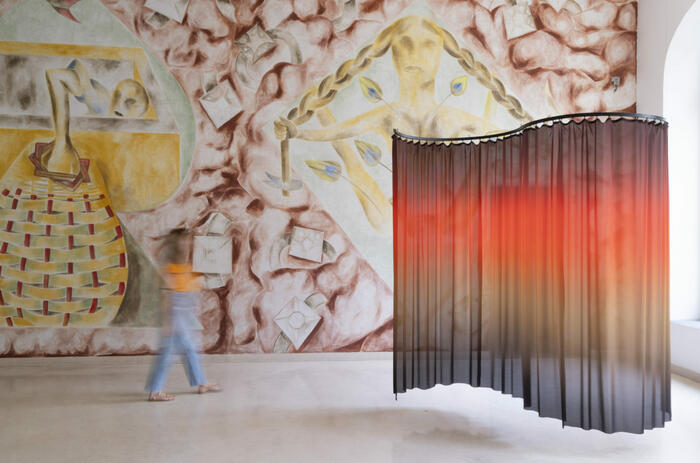
Fondazione Donnaregina per le arti contemporanee – museo Madre present Vai, vai, Saudade, a collective exhibition which offers a poetic pathway, exploring a series of stories related to the art produced in Brazil since WWII. Curated by Cristiano Raimondi.
“VAI, VAI, SAUDADE”: BRAZIL’S TRAVEL NOTES
Fondazione Donnaregina per le arti contemporanee – museo Madre present Vai, vai, Saudade, a collective exhibition which offers a poetic pathway, exploring a series of stories related to the art produced in Brazil since WWII. Curated by Cristiano Raimondi.
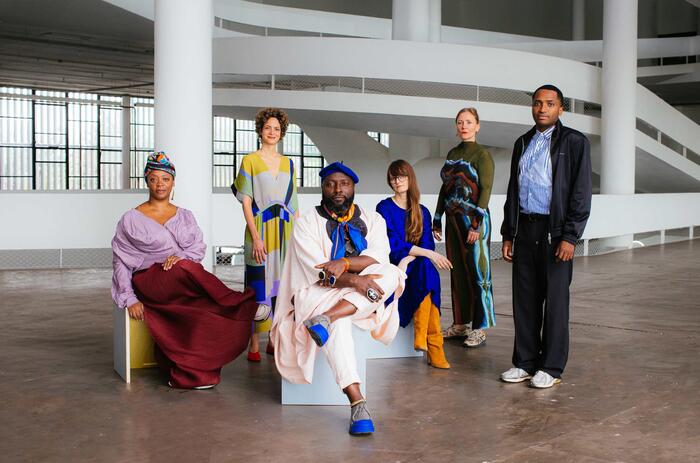
Under the general curatorship of Bonaventure by Soh Bejen Ndikung, the 36th São Paulo Biennial announces its title, curatorial concept, collaborators and visual identity, in addition to informing about an important change in its exhibition period. The title will be: Nem todo viandante anda estradas / Da humanidade como prática [Not All Travelers Walk Roads / Of Humanity as Practice].
THEME AND CURATORIAL CONCEPT FOR THE 36TH SÃO PAULO BIENNIAL ANNOUNCED
Under the general curatorship of Bonaventure by Soh Bejen Ndikung, the 36th São Paulo Biennial announces its title, curatorial concept, collaborators and visual identity, in addition to informing about an important change in its exhibition period. The title will be: Nem todo viandante anda estradas / Da humanidade como prática [Not All Travelers Walk Roads / Of Humanity as Practice].

Madrid's Elba Benitez gallery has entrusted Vik Muniz (Sao Paulo, Brazil, 1961) with its first exhibition of the new season. Entitled Photocubism, the proposal is based on art historiography itself, recovering the cubist aesthetics as a substratum of the technical intervention he makes on iconic works of this movement. The Brazilian artist thus opts for this language to obtain new images that raise questions about perception and result.

After six years of his collaboration as a teacher in the Master's Degree in Curatorial Studies offered by the Museo Universidad de Navarra (MUN), Gabriel Pérez-Barreriro has been appointed as the institution's new artistic director. With extensive experience in university museums and other centers in Europe, the United States and Latin America, he is now the new head of the MUN's artistic strategy together with Teresa Lasheras, artistic director of performing arts and music.
GABRIEL PÉREZ-BARREIRO: THE MUN'S NEW ARTISTIC DIRECTOR
After six years of his collaboration as a teacher in the Master's Degree in Curatorial Studies offered by the Museo Universidad de Navarra (MUN), Gabriel Pérez-Barreriro has been appointed as the institution's new artistic director. With extensive experience in university museums and other centers in Europe, the United States and Latin America, he is now the new head of the MUN's artistic strategy together with Teresa Lasheras, artistic director of performing arts and music.

The Appearance: Art of the Asian Diaspora in Latin America & the Caribbean is the first exhibition in New York City at Americas Society to center the artistic production of the Asian diaspora in the region from the 1940s to the present. Focusing on postwar and contemporary art, the exhibition showcases the work of thirty artists from fifteen countries working in a range of artistic mediums including painting, sculpture, performance, photography, and video, to shed light into strategies and themes that resonate across a wide array of Asian diasporic practice throughout Latin America and the Caribbean.
ART OF THE ASIAN DIASPORA IN LATIN AMERICA & THE CARIBBEAN
The Appearance: Art of the Asian Diaspora in Latin America & the Caribbean is the first exhibition in New York City at Americas Society to center the artistic production of the Asian diaspora in the region from the 1940s to the present. Focusing on postwar and contemporary art, the exhibition showcases the work of thirty artists from fifteen countries working in a range of artistic mediums including painting, sculpture, performance, photography, and video, to shed light into strategies and themes that resonate across a wide array of Asian diasporic practice throughout Latin America and the Caribbean.

A man is waiting. In elegant clothes, the figure is placed in the center of what looks like a hotel bar. He plays the lead role on a sort of stage, an interior that is something of a cage, something of a scenic locus, as if a possible flirtation or a desired encounter would provide some catalysis of emergence, a quick enjoyment, an intense release, however short and finite, perhaps dismantling a routine of limits. Man in Blue (1954) works as a synthesis of the not so extensive but very significant gathering of the celebrated Francis Bacon (1909-1992) in A Beleza da Carne (The Beauty of Meat), at Masp (São Paulo Museum of Art). The exhibition is curated by Adriano Pedrosa, artistic director of the institution and curator of the current edition of the Venice Biennale, the 60th, on show until November in the Italian city, and co-curated by Laura Cosendey.
BODY INSIDE OUT - FRANCIS BACON, THE BEAUTY OF MEAT
A man is waiting. In elegant clothes, the figure is placed in the center of what looks like a hotel bar. He plays the lead role on a sort of stage, an interior that is something of a cage, something of a scenic locus, as if a possible flirtation or a desired encounter would provide some catalysis of emergence, a quick enjoyment, an intense release, however short and finite, perhaps dismantling a routine of limits. Man in Blue (1954) works as a synthesis of the not so extensive but very significant gathering of the celebrated Francis Bacon (1909-1992) in A Beleza da Carne (The Beauty of Meat), at Masp (São Paulo Museum of Art). The exhibition is curated by Adriano Pedrosa, artistic director of the institution and curator of the current edition of the Venice Biennale, the 60th, on show until November in the Italian city, and co-curated by Laura Cosendey.

Fondazione Donnaregina per le arti contemporanee – museo Madre present Vai, vai, Saudade, a collective exhibition which offers a poetic pathway, exploring a series of stories related to the art produced in Brazil since WWII. Curated by Cristiano Raimondi.
“VAI, VAI, SAUDADE”: BRAZIL’S TRAVEL NOTES
Fondazione Donnaregina per le arti contemporanee – museo Madre present Vai, vai, Saudade, a collective exhibition which offers a poetic pathway, exploring a series of stories related to the art produced in Brazil since WWII. Curated by Cristiano Raimondi.

Under the general curatorship of Bonaventure by Soh Bejen Ndikung, the 36th São Paulo Biennial announces its title, curatorial concept, collaborators and visual identity, in addition to informing about an important change in its exhibition period. The title will be: Nem todo viandante anda estradas / Da humanidade como prática [Not All Travelers Walk Roads / Of Humanity as Practice].
THEME AND CURATORIAL CONCEPT FOR THE 36TH SÃO PAULO BIENNIAL ANNOUNCED
Under the general curatorship of Bonaventure by Soh Bejen Ndikung, the 36th São Paulo Biennial announces its title, curatorial concept, collaborators and visual identity, in addition to informing about an important change in its exhibition period. The title will be: Nem todo viandante anda estradas / Da humanidade como prática [Not All Travelers Walk Roads / Of Humanity as Practice].

Madrid's Elba Benitez gallery has entrusted Vik Muniz (Sao Paulo, Brazil, 1961) with its first exhibition of the new season. Entitled Photocubism, the proposal is based on art historiography itself, recovering the cubist aesthetics as a substratum of the technical intervention he makes on iconic works of this movement. The Brazilian artist thus opts for this language to obtain new images that raise questions about perception and result.

After six years of his collaboration as a teacher in the Master's Degree in Curatorial Studies offered by the Museo Universidad de Navarra (MUN), Gabriel Pérez-Barreriro has been appointed as the institution's new artistic director. With extensive experience in university museums and other centers in Europe, the United States and Latin America, he is now the new head of the MUN's artistic strategy together with Teresa Lasheras, artistic director of performing arts and music.
GABRIEL PÉREZ-BARREIRO: THE MUN'S NEW ARTISTIC DIRECTOR
After six years of his collaboration as a teacher in the Master's Degree in Curatorial Studies offered by the Museo Universidad de Navarra (MUN), Gabriel Pérez-Barreriro has been appointed as the institution's new artistic director. With extensive experience in university museums and other centers in Europe, the United States and Latin America, he is now the new head of the MUN's artistic strategy together with Teresa Lasheras, artistic director of performing arts and music.

The Appearance: Art of the Asian Diaspora in Latin America & the Caribbean is the first exhibition in New York City at Americas Society to center the artistic production of the Asian diaspora in the region from the 1940s to the present. Focusing on postwar and contemporary art, the exhibition showcases the work of thirty artists from fifteen countries working in a range of artistic mediums including painting, sculpture, performance, photography, and video, to shed light into strategies and themes that resonate across a wide array of Asian diasporic practice throughout Latin America and the Caribbean.
ART OF THE ASIAN DIASPORA IN LATIN AMERICA & THE CARIBBEAN
The Appearance: Art of the Asian Diaspora in Latin America & the Caribbean is the first exhibition in New York City at Americas Society to center the artistic production of the Asian diaspora in the region from the 1940s to the present. Focusing on postwar and contemporary art, the exhibition showcases the work of thirty artists from fifteen countries working in a range of artistic mediums including painting, sculpture, performance, photography, and video, to shed light into strategies and themes that resonate across a wide array of Asian diasporic practice throughout Latin America and the Caribbean.

A man is waiting. In elegant clothes, the figure is placed in the center of what looks like a hotel bar. He plays the lead role on a sort of stage, an interior that is something of a cage, something of a scenic locus, as if a possible flirtation or a desired encounter would provide some catalysis of emergence, a quick enjoyment, an intense release, however short and finite, perhaps dismantling a routine of limits. Man in Blue (1954) works as a synthesis of the not so extensive but very significant gathering of the celebrated Francis Bacon (1909-1992) in A Beleza da Carne (The Beauty of Meat), at Masp (São Paulo Museum of Art). The exhibition is curated by Adriano Pedrosa, artistic director of the institution and curator of the current edition of the Venice Biennale, the 60th, on show until November in the Italian city, and co-curated by Laura Cosendey.
BODY INSIDE OUT - FRANCIS BACON, THE BEAUTY OF MEAT
A man is waiting. In elegant clothes, the figure is placed in the center of what looks like a hotel bar. He plays the lead role on a sort of stage, an interior that is something of a cage, something of a scenic locus, as if a possible flirtation or a desired encounter would provide some catalysis of emergence, a quick enjoyment, an intense release, however short and finite, perhaps dismantling a routine of limits. Man in Blue (1954) works as a synthesis of the not so extensive but very significant gathering of the celebrated Francis Bacon (1909-1992) in A Beleza da Carne (The Beauty of Meat), at Masp (São Paulo Museum of Art). The exhibition is curated by Adriano Pedrosa, artistic director of the institution and curator of the current edition of the Venice Biennale, the 60th, on show until November in the Italian city, and co-curated by Laura Cosendey.

Fondazione Donnaregina per le arti contemporanee – museo Madre present Vai, vai, Saudade, a collective exhibition which offers a poetic pathway, exploring a series of stories related to the art produced in Brazil since WWII. Curated by Cristiano Raimondi.
“VAI, VAI, SAUDADE”: BRAZIL’S TRAVEL NOTES
Fondazione Donnaregina per le arti contemporanee – museo Madre present Vai, vai, Saudade, a collective exhibition which offers a poetic pathway, exploring a series of stories related to the art produced in Brazil since WWII. Curated by Cristiano Raimondi.

Under the general curatorship of Bonaventure by Soh Bejen Ndikung, the 36th São Paulo Biennial announces its title, curatorial concept, collaborators and visual identity, in addition to informing about an important change in its exhibition period. The title will be: Nem todo viandante anda estradas / Da humanidade como prática [Not All Travelers Walk Roads / Of Humanity as Practice].
THEME AND CURATORIAL CONCEPT FOR THE 36TH SÃO PAULO BIENNIAL ANNOUNCED
Under the general curatorship of Bonaventure by Soh Bejen Ndikung, the 36th São Paulo Biennial announces its title, curatorial concept, collaborators and visual identity, in addition to informing about an important change in its exhibition period. The title will be: Nem todo viandante anda estradas / Da humanidade como prática [Not All Travelers Walk Roads / Of Humanity as Practice].

Madrid's Elba Benitez gallery has entrusted Vik Muniz (Sao Paulo, Brazil, 1961) with its first exhibition of the new season. Entitled Photocubism, the proposal is based on art historiography itself, recovering the cubist aesthetics as a substratum of the technical intervention he makes on iconic works of this movement. The Brazilian artist thus opts for this language to obtain new images that raise questions about perception and result.

After six years of his collaboration as a teacher in the Master's Degree in Curatorial Studies offered by the Museo Universidad de Navarra (MUN), Gabriel Pérez-Barreriro has been appointed as the institution's new artistic director. With extensive experience in university museums and other centers in Europe, the United States and Latin America, he is now the new head of the MUN's artistic strategy together with Teresa Lasheras, artistic director of performing arts and music.
GABRIEL PÉREZ-BARREIRO: THE MUN'S NEW ARTISTIC DIRECTOR
After six years of his collaboration as a teacher in the Master's Degree in Curatorial Studies offered by the Museo Universidad de Navarra (MUN), Gabriel Pérez-Barreriro has been appointed as the institution's new artistic director. With extensive experience in university museums and other centers in Europe, the United States and Latin America, he is now the new head of the MUN's artistic strategy together with Teresa Lasheras, artistic director of performing arts and music.

The Appearance: Art of the Asian Diaspora in Latin America & the Caribbean is the first exhibition in New York City at Americas Society to center the artistic production of the Asian diaspora in the region from the 1940s to the present. Focusing on postwar and contemporary art, the exhibition showcases the work of thirty artists from fifteen countries working in a range of artistic mediums including painting, sculpture, performance, photography, and video, to shed light into strategies and themes that resonate across a wide array of Asian diasporic practice throughout Latin America and the Caribbean.
ART OF THE ASIAN DIASPORA IN LATIN AMERICA & THE CARIBBEAN
The Appearance: Art of the Asian Diaspora in Latin America & the Caribbean is the first exhibition in New York City at Americas Society to center the artistic production of the Asian diaspora in the region from the 1940s to the present. Focusing on postwar and contemporary art, the exhibition showcases the work of thirty artists from fifteen countries working in a range of artistic mediums including painting, sculpture, performance, photography, and video, to shed light into strategies and themes that resonate across a wide array of Asian diasporic practice throughout Latin America and the Caribbean.

A man is waiting. In elegant clothes, the figure is placed in the center of what looks like a hotel bar. He plays the lead role on a sort of stage, an interior that is something of a cage, something of a scenic locus, as if a possible flirtation or a desired encounter would provide some catalysis of emergence, a quick enjoyment, an intense release, however short and finite, perhaps dismantling a routine of limits. Man in Blue (1954) works as a synthesis of the not so extensive but very significant gathering of the celebrated Francis Bacon (1909-1992) in A Beleza da Carne (The Beauty of Meat), at Masp (São Paulo Museum of Art). The exhibition is curated by Adriano Pedrosa, artistic director of the institution and curator of the current edition of the Venice Biennale, the 60th, on show until November in the Italian city, and co-curated by Laura Cosendey.
BODY INSIDE OUT - FRANCIS BACON, THE BEAUTY OF MEAT
A man is waiting. In elegant clothes, the figure is placed in the center of what looks like a hotel bar. He plays the lead role on a sort of stage, an interior that is something of a cage, something of a scenic locus, as if a possible flirtation or a desired encounter would provide some catalysis of emergence, a quick enjoyment, an intense release, however short and finite, perhaps dismantling a routine of limits. Man in Blue (1954) works as a synthesis of the not so extensive but very significant gathering of the celebrated Francis Bacon (1909-1992) in A Beleza da Carne (The Beauty of Meat), at Masp (São Paulo Museum of Art). The exhibition is curated by Adriano Pedrosa, artistic director of the institution and curator of the current edition of the Venice Biennale, the 60th, on show until November in the Italian city, and co-curated by Laura Cosendey.

Fondazione Donnaregina per le arti contemporanee – museo Madre present Vai, vai, Saudade, a collective exhibition which offers a poetic pathway, exploring a series of stories related to the art produced in Brazil since WWII. Curated by Cristiano Raimondi.
“VAI, VAI, SAUDADE”: BRAZIL’S TRAVEL NOTES
Fondazione Donnaregina per le arti contemporanee – museo Madre present Vai, vai, Saudade, a collective exhibition which offers a poetic pathway, exploring a series of stories related to the art produced in Brazil since WWII. Curated by Cristiano Raimondi.

Under the general curatorship of Bonaventure by Soh Bejen Ndikung, the 36th São Paulo Biennial announces its title, curatorial concept, collaborators and visual identity, in addition to informing about an important change in its exhibition period. The title will be: Nem todo viandante anda estradas / Da humanidade como prática [Not All Travelers Walk Roads / Of Humanity as Practice].
THEME AND CURATORIAL CONCEPT FOR THE 36TH SÃO PAULO BIENNIAL ANNOUNCED
Under the general curatorship of Bonaventure by Soh Bejen Ndikung, the 36th São Paulo Biennial announces its title, curatorial concept, collaborators and visual identity, in addition to informing about an important change in its exhibition period. The title will be: Nem todo viandante anda estradas / Da humanidade como prática [Not All Travelers Walk Roads / Of Humanity as Practice].

Madrid's Elba Benitez gallery has entrusted Vik Muniz (Sao Paulo, Brazil, 1961) with its first exhibition of the new season. Entitled Photocubism, the proposal is based on art historiography itself, recovering the cubist aesthetics as a substratum of the technical intervention he makes on iconic works of this movement. The Brazilian artist thus opts for this language to obtain new images that raise questions about perception and result.

After six years of his collaboration as a teacher in the Master's Degree in Curatorial Studies offered by the Museo Universidad de Navarra (MUN), Gabriel Pérez-Barreriro has been appointed as the institution's new artistic director. With extensive experience in university museums and other centers in Europe, the United States and Latin America, he is now the new head of the MUN's artistic strategy together with Teresa Lasheras, artistic director of performing arts and music.
GABRIEL PÉREZ-BARREIRO: THE MUN'S NEW ARTISTIC DIRECTOR
After six years of his collaboration as a teacher in the Master's Degree in Curatorial Studies offered by the Museo Universidad de Navarra (MUN), Gabriel Pérez-Barreriro has been appointed as the institution's new artistic director. With extensive experience in university museums and other centers in Europe, the United States and Latin America, he is now the new head of the MUN's artistic strategy together with Teresa Lasheras, artistic director of performing arts and music.

The Appearance: Art of the Asian Diaspora in Latin America & the Caribbean is the first exhibition in New York City at Americas Society to center the artistic production of the Asian diaspora in the region from the 1940s to the present. Focusing on postwar and contemporary art, the exhibition showcases the work of thirty artists from fifteen countries working in a range of artistic mediums including painting, sculpture, performance, photography, and video, to shed light into strategies and themes that resonate across a wide array of Asian diasporic practice throughout Latin America and the Caribbean.
ART OF THE ASIAN DIASPORA IN LATIN AMERICA & THE CARIBBEAN
The Appearance: Art of the Asian Diaspora in Latin America & the Caribbean is the first exhibition in New York City at Americas Society to center the artistic production of the Asian diaspora in the region from the 1940s to the present. Focusing on postwar and contemporary art, the exhibition showcases the work of thirty artists from fifteen countries working in a range of artistic mediums including painting, sculpture, performance, photography, and video, to shed light into strategies and themes that resonate across a wide array of Asian diasporic practice throughout Latin America and the Caribbean.

A man is waiting. In elegant clothes, the figure is placed in the center of what looks like a hotel bar. He plays the lead role on a sort of stage, an interior that is something of a cage, something of a scenic locus, as if a possible flirtation or a desired encounter would provide some catalysis of emergence, a quick enjoyment, an intense release, however short and finite, perhaps dismantling a routine of limits. Man in Blue (1954) works as a synthesis of the not so extensive but very significant gathering of the celebrated Francis Bacon (1909-1992) in A Beleza da Carne (The Beauty of Meat), at Masp (São Paulo Museum of Art). The exhibition is curated by Adriano Pedrosa, artistic director of the institution and curator of the current edition of the Venice Biennale, the 60th, on show until November in the Italian city, and co-curated by Laura Cosendey.
BODY INSIDE OUT - FRANCIS BACON, THE BEAUTY OF MEAT
A man is waiting. In elegant clothes, the figure is placed in the center of what looks like a hotel bar. He plays the lead role on a sort of stage, an interior that is something of a cage, something of a scenic locus, as if a possible flirtation or a desired encounter would provide some catalysis of emergence, a quick enjoyment, an intense release, however short and finite, perhaps dismantling a routine of limits. Man in Blue (1954) works as a synthesis of the not so extensive but very significant gathering of the celebrated Francis Bacon (1909-1992) in A Beleza da Carne (The Beauty of Meat), at Masp (São Paulo Museum of Art). The exhibition is curated by Adriano Pedrosa, artistic director of the institution and curator of the current edition of the Venice Biennale, the 60th, on show until November in the Italian city, and co-curated by Laura Cosendey.

Fondazione Donnaregina per le arti contemporanee – museo Madre present Vai, vai, Saudade, a collective exhibition which offers a poetic pathway, exploring a series of stories related to the art produced in Brazil since WWII. Curated by Cristiano Raimondi.
“VAI, VAI, SAUDADE”: BRAZIL’S TRAVEL NOTES
Fondazione Donnaregina per le arti contemporanee – museo Madre present Vai, vai, Saudade, a collective exhibition which offers a poetic pathway, exploring a series of stories related to the art produced in Brazil since WWII. Curated by Cristiano Raimondi.

Under the general curatorship of Bonaventure by Soh Bejen Ndikung, the 36th São Paulo Biennial announces its title, curatorial concept, collaborators and visual identity, in addition to informing about an important change in its exhibition period. The title will be: Nem todo viandante anda estradas / Da humanidade como prática [Not All Travelers Walk Roads / Of Humanity as Practice].
THEME AND CURATORIAL CONCEPT FOR THE 36TH SÃO PAULO BIENNIAL ANNOUNCED
Under the general curatorship of Bonaventure by Soh Bejen Ndikung, the 36th São Paulo Biennial announces its title, curatorial concept, collaborators and visual identity, in addition to informing about an important change in its exhibition period. The title will be: Nem todo viandante anda estradas / Da humanidade como prática [Not All Travelers Walk Roads / Of Humanity as Practice].




